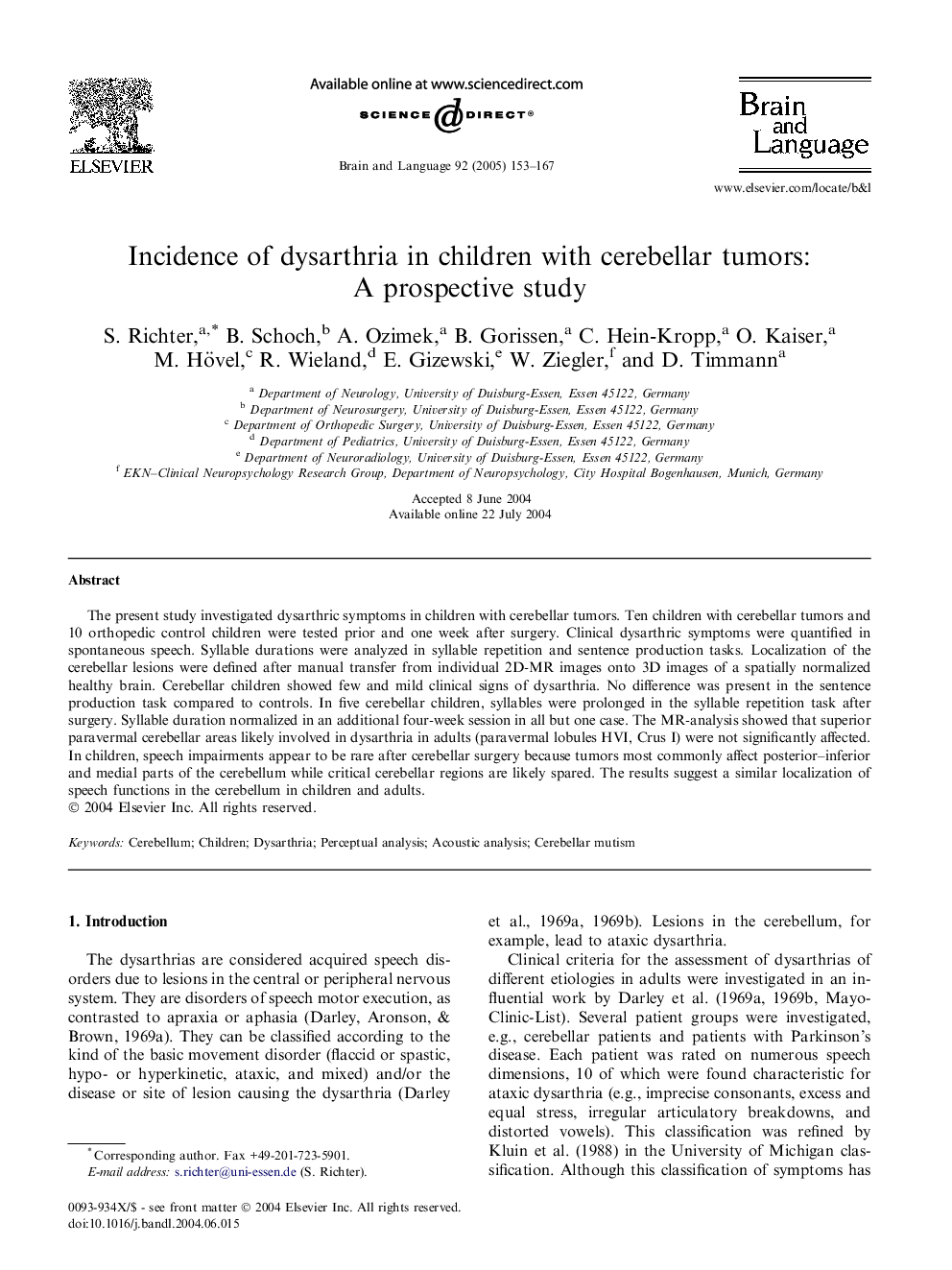| Article ID | Journal | Published Year | Pages | File Type |
|---|---|---|---|---|
| 10456884 | Brain and Language | 2005 | 15 Pages |
Abstract
The present study investigated dysarthric symptoms in children with cerebellar tumors. Ten children with cerebellar tumors and 10 orthopedic control children were tested prior and one week after surgery. Clinical dysarthric symptoms were quantified in spontaneous speech. Syllable durations were analyzed in syllable repetition and sentence production tasks. Localization of the cerebellar lesions were defined after manual transfer from individual 2D-MR images onto 3D images of a spatially normalized healthy brain. Cerebellar children showed few and mild clinical signs of dysarthria. No difference was present in the sentence production task compared to controls. In five cerebellar children, syllables were prolonged in the syllable repetition task after surgery. Syllable duration normalized in an additional four-week session in all but one case. The MR-analysis showed that superior paravermal cerebellar areas likely involved in dysarthria in adults (paravermal lobules HVI, Crus I) were not significantly affected. In children, speech impairments appear to be rare after cerebellar surgery because tumors most commonly affect posterior-inferior and medial parts of the cerebellum while critical cerebellar regions are likely spared. The results suggest a similar localization of speech functions in the cerebellum in children and adults.
Related Topics
Life Sciences
Neuroscience
Biological Psychiatry
Authors
S. Richter, B. Schoch, A. Ozimek, B. Gorissen, C. Hein-Kropp, O. Kaiser, M. Hövel, R. Wieland, E. Gizewski, W. Ziegler, D. Timmann,
